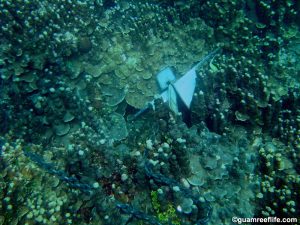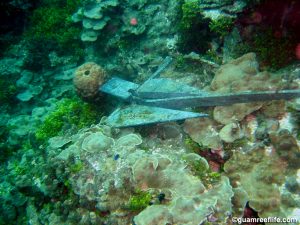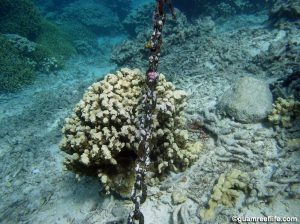It’s pretty simple – in a contest between anchors and coral, anchors win every time. Boat anchors can cause significant physical damage to corals, especially at reef sites that receive a lot of boat traffic – like diving or snorkeling sites. The heavy anchors can smash even the most sturdy corals, while the anchor chains and line can scrape coral, removing living tissue, and can wrap around corals and break off pieces – or even entire colonies – as the boats sway back and forth and pull on the line.
Fortunately, the Department of Agriculture’s Division of Aquatic and Wildlife Resources (DAWR) established Shallow Water Mooring Systems (SWMS) at popular fishing, diving, and snorkeling sites around the island. Despite the presence of the SWMS, boats are sometimes seen anchoring directly on the reef at the more popular recreational sites, as well as less visited sites. In some cases, the SWMS moorings are occupied, and rather than tying up to the moored boat, some boats choose to instead anchor on the reef. In other cases, the moorings may be in need of repair or replacement, or the boaters are anchoring at sites at which moorings were never established.
A related concern is the improper installation of moorings, which can actually cause more harm than good. Poorly designed moorings, or even well-designed systems that are improperly installed, can be slowly (or not-so-slowly) pulled across the reef. Occasionally, rafts and other floating objects – such as buoys used to demarcate swimming areas – are improperly moored to the reef. Sometimes they are tied to concrete blocks or other inappropriate moorings that are easily moved by wave action – and sometimes actually pushing up against or even breaking nearby coral. In other cases, these objects are tied directly to living coral, causing breakage and/or abrading and killing living coral tissue.
Click here for photos of anchor damage and damage caused by improper mooring



